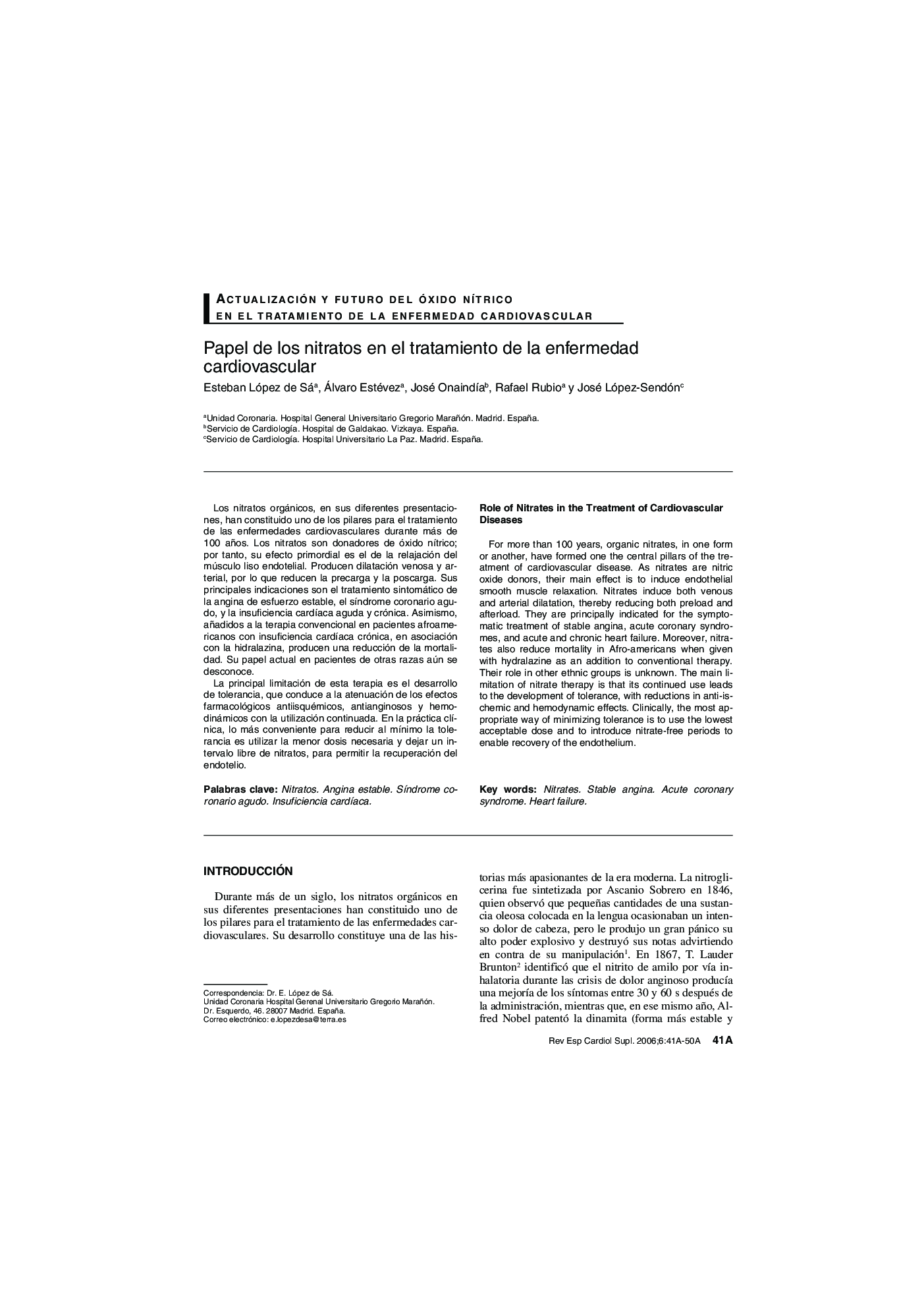| Article ID | Journal | Published Year | Pages | File Type |
|---|---|---|---|---|
| 3019764 | Revista Española de Cardiología Suplementos | 2006 | 10 Pages |
Abstract
For more than 100 years, organic nitrates, in one form or another, have formed one the central pillars of the treatment of cardiovascular disease. As nitrates are nitric oxide donors, their main effect is to induce endothelial smooth muscle relaxation. Nitrates induce both venous and arterial dilatation, thereby reducing both preload and afterload. They are principally indicated for the symptomatic treatment of stable angina, acute coronary syndromes, and acute and chronic heart failure. Moreover, nitrates also reduce mortality in Afro-americans when given with hydralazine as an addition to conventional therapy. Their role in other ethnic groups is unknown. The main limitation of nitrate therapy is that its continued use leads to the development of tolerance, with reductions in anti-ischemic and hemodynamic effects. Clinically, the most appropriate way of minimizing tolerance is to use the lowest acceptable dose and to introduce nitrate-free periods to enable recovery of the endothelium.
Keywords
Related Topics
Health Sciences
Medicine and Dentistry
Cardiology and Cardiovascular Medicine
Authors
Esteban López de Sá, Álvaro Estévez, José OnaindÃa, Rafael Rubio, José López-Sendón,
